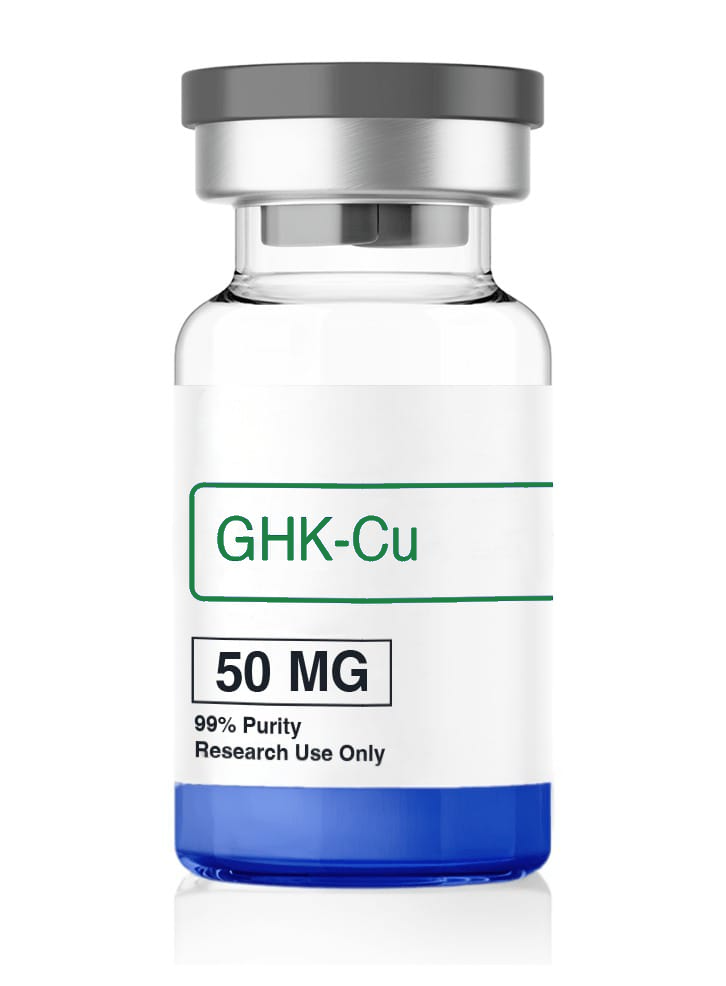
GHK-Cu
GHK-Cu is a research peptide being studied for its anti-aging, hair growth, and regenerative effects.

As low as $17/mo with affirm
Compound Overview
Class of Compound:
Peptide
Mechanism of Action:
GHK-Cu is said to stimulate the synthesis and breakdown of collagen and glycosaminoglycans, as well as modulating the activity of metalloproteinases and their inhibitors. It is also believed to stimulate dermatan sulfate, chondroitin sulfate, and decorin, and acts to attract immune and endothelial cells to sites of injury.
Notable Studies:
Also Known As:
Glycyl-L-Histidyl-L-Lysine; Growth-modulating peptide, Kollaren, Liver cell growth factor, Liver growth factor Cu-GHK, Glycyl-histidyl-lysine, monocopper salt
Research Applications:
- Wound healing
- Nerve regeneration
- Hair growth
- Anti-aging
- DNA repair
Risks:
- Mechanisms still not fully understood
- No FDA review or approval
- Many counterfeits online
Chemical Structure

What is GHK-Cu?
GHK-Cu is a human copper-binding peptide proven to confer a host of benefits related to healing, tissue regeneration, and skin, hair, and nail health.
GHK was first discovered in 1973 by the noted peptide researcher Dr. Loren Pickart. He found that aged liver cells, when inoculated with blood from young people, were able to begin regenerating [1].
Eventually, it was discovered that GHK was the cause of this spontaneous regeneration. This is also how researchers were able to discover that GHK declined during the aging process, since the aged cells were not able to begin regeneration until introduced to young blood cells.
Since this discovery, GHK-Cu has been widely used in topical anti-aging skincare products and hair regrowth formulations. It also shows strong potential in more therapeutic applications from pain reduction to nervous system function, although research is ongoing at this time.
Here is what researchers need to know about GHK-Cu.

What Does GHK-Cu Do?
GHK-Cu (glycyl-l-histidyl-l-lysine-copper) is a copper-binding human peptide found in cell plasma, saliva, and urine. It is also known as copper tri-peptide, and when not bound with copper it is referred to as GHK. Levels of GHK-Cu in the body naturally decline during aging [2].
GHK-Cu’s primary function is one of healing and antioxidative effects, and researchers attribute much of its beneficial effect to its ability to bind with copper ions. This allows it to play an important role in copper metabolism, and the essential mineral copper plays many key roles in human health [3].
However, GHK-Cu may also — unrelated to its copper-binding capacity — upregulate and downregulate a number of genes that play roles in skin repair, healing, and blood vessel and nerve growth [3].
